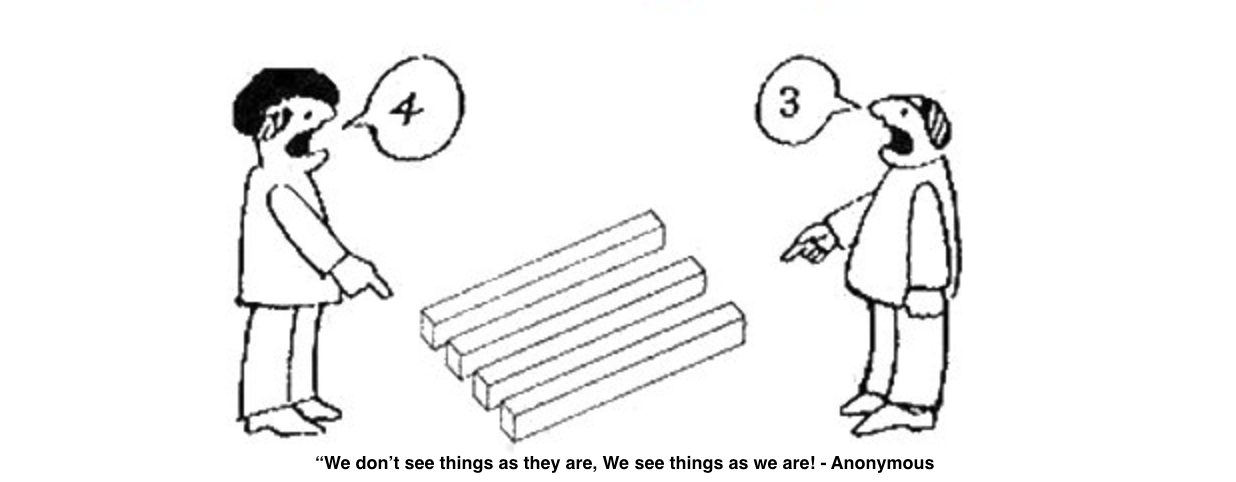
Many years ago (more than I care to remember), I participated in a seminar that certified me as a “trainer” for a program called Teacher Expectations and Student Achievement (TESA). Based on the work of American sociologist Robert Merton (The Self-Fulfilling Prophecy) and research conducted within the Los Angeles Unified School District, the program was designed to assist educators in understanding how a student’s perception of identified teacher behaviors (both conscious and unconscious) served to hinder or foster student achievement. I later took this research and conducted trainings in the private sector to demonstrate how many of the identified behaviors served to impact employee performance and management/staff relationships . It comes down to this, and you have all heard it before, “Perception is the reality we live in!” Knowing this, what can we do to bridge the gap between perception and reality? Perhaps the first thing is to consider how perception affects us.
Debbie McGauran provides this perspective in her post, “Jumping to Conclusions: 6 Ways Perception Affects Our Lives”. She defines perception as how we “interpret” what is going on outside ourselves. It is the “conclusions we jump to” based on limited information or previous life experiences. She shares that it is important to remember that perception often occurs at a subconscious level without our realization. McGauran then provides six examples of how perception affects us:
• First impressions: These make a lasting impression that is difficult to change.
• Stereotypes: These are the labels that have been assigned throughout our lives. They can be based on age, sex, ethnic background, sexual orientation, social status and/or religion.
• Selective Perception: Also known as tunnel vision. This is often seen during problem solving and represents seeing only one solution while ignoring other possibilities.
• Self-Fulfilling Prophecy: We perform in a manner consistent with our own expectations.
• Confirmation Bias: This represents the search for evidence that will confirm your belief even in the face of contradictory information.
• Anchoring Effect: Is a tendency to contrast or compare a limited number of things, and then use this limited information to establish benchmarks for everything else.
So how does perception impact the workplace?
Robert Tanner, a business and management consultant considers this notion in his post, “Equity Theory – Why Employee Perceptions About Fairness Do Matter” Tanner begins by sharing that a lack of motivation on the part of employees is a common concern expressed by management. However, while managers do not technically motivate people, they do create the environment that can foster or hinder employee motivation. He drills into this idea by considering the Equity Theory research of behavioral psychologist John Stacey Adams. Essentially Equity Theory states that employees perceive a situation as equitable when those who give similar input get similar outcomes. When they perceive the situation to be unfair, trust in the organization’s leadership is compromised and morale and motivation suffer. How do you change this? Tanner maintains it is as simple as better management of expectations coupled with open/active communication.
Why does it seem (I know that is a perception) that better communication is the solution for a plethora of issues, including lessening the gap between reality and perception. This idea is well illustrated in Tom Blower’s recent post entitled, “Communication is About Closing the Gap”. Blower recounts an incident in September when “Black Lives Matter” protestors showed up at a pro Trump rally. He shares that a remarkable thing happened after rally organizers invited the leader of the protestors to the stage to speak, The leader of the protestors spoke, people listened, and they realized that actually, both sides had a lot in common. Afterwards people were seen talking to each other, taking pictures together and shaking hands. There was clearly a mindset shift – a move from having fixed views of “the others’” to being open to different perspectives and possibilities. Blower reminds us that good conversations begin when we take time to identify the gap between what we want people to think, feel or do as a result of communicating, and what they are thinking or feeling now. Specifically he gives us 5 recommendations to help close the gap through communication:
• Pause: Start by reflecting on what you want to achieve as a result of your communication.
• Identify the Gap: Think about the people you are communicating to. What are their emotional needs? What’s on their minds, and how would you feel in a similar situation?
• Find the Common Ground: What is a shared experience or idea that all agree upon. Use language like us, we and together to promote collaboration.
• Create Images: Use stories and personal, or better yet, common accounts of coming thorough difficult times. Focus on the emotions at the time. Images drive emotions, emotional reaction drives buy-in or a shift in belief .
• Listen, Listen, Listen: Once you create space for people to share or debate, listen and encourage more discussion. It is discussion that is the genesis to new ideas and innovation.
Once again it all comes down to communication. In this case it is represented by a willingness to listen, learn and share. Our willingness to engage with others, discuss ideas and be open to differing perspectives broadens our world and lets us see reality from a whole new perspective. Embrace the Challenge!
